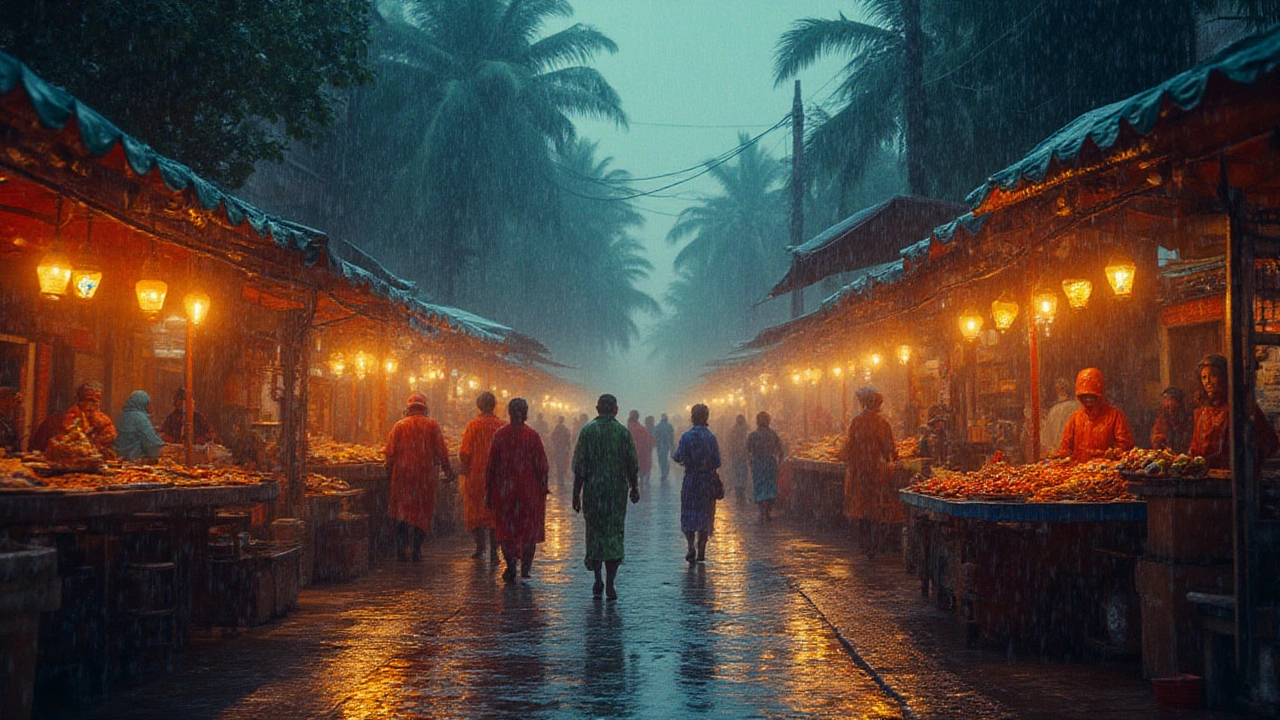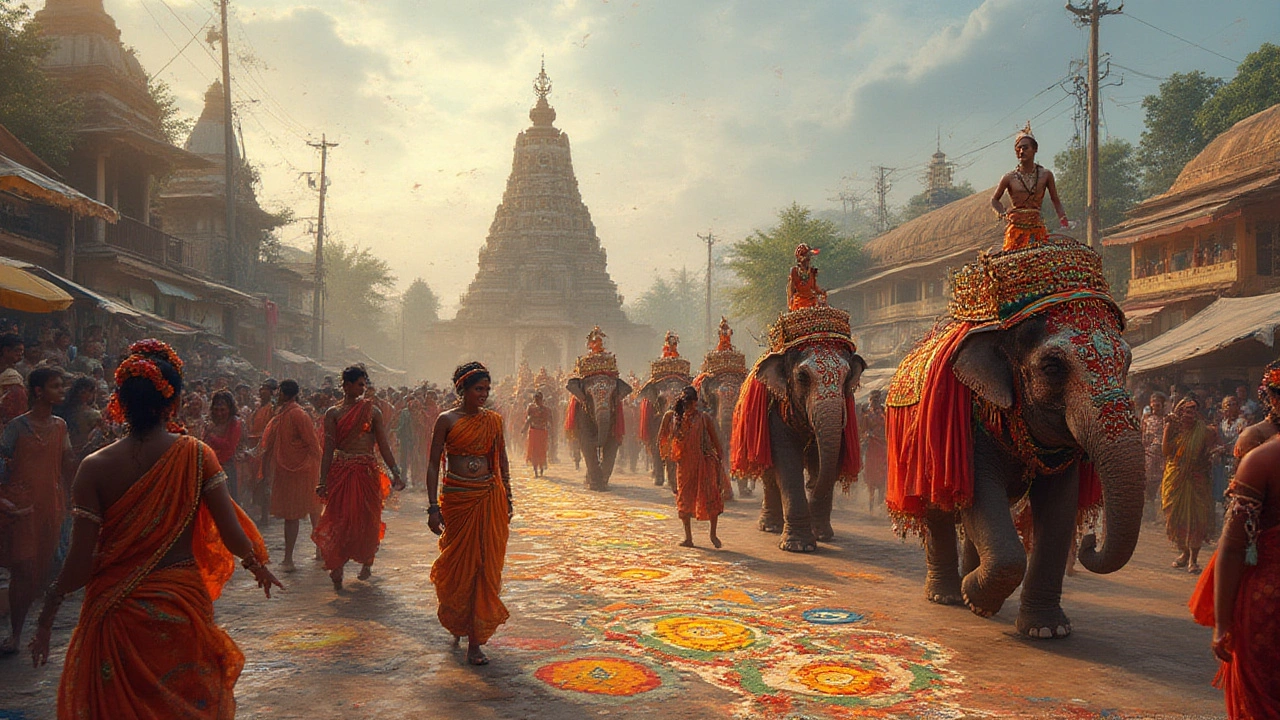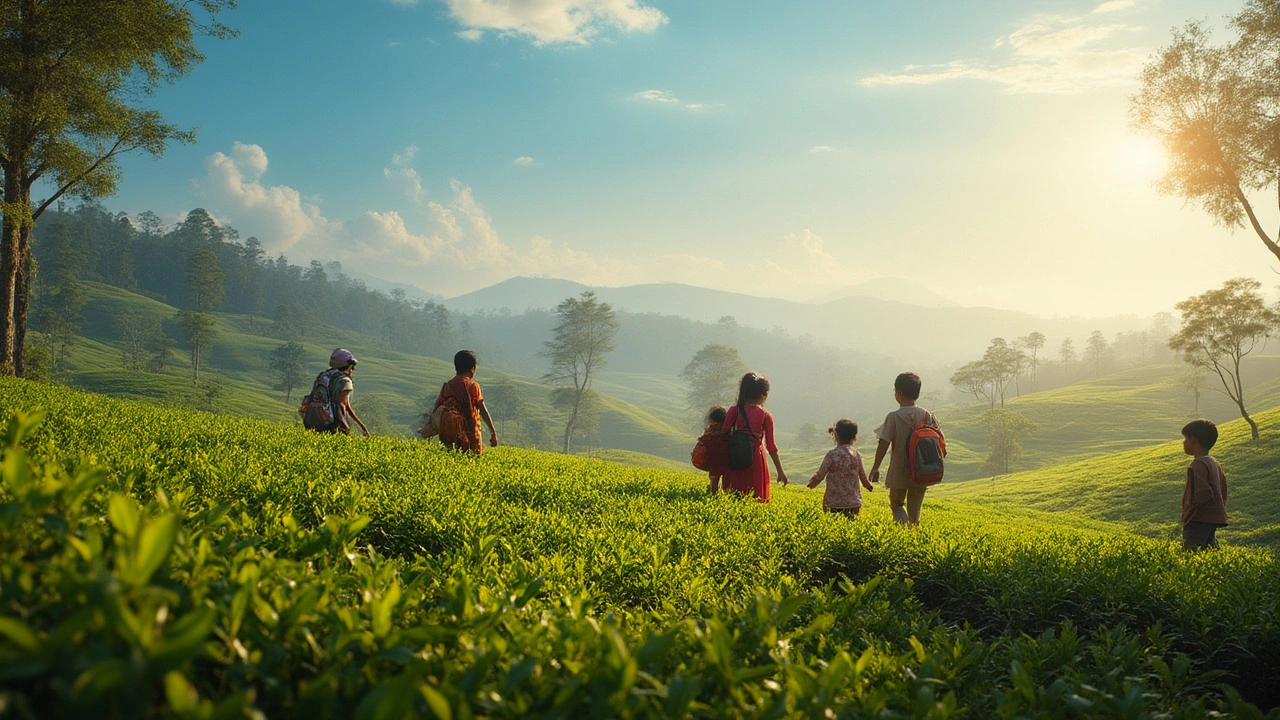If you’ve ever seen a photo of the backwaters of Kerala draped in mist or the glowing temples of Tamil Nadu set against a bright blue sky, you know southern India isn’t just another spot on the map. It’s a sensory overload—think coconut trees swaying over golden beaches, the dizzying scent of spices in a bustling market, or sudden downpours that turn stone courtyards into mirror-like pools. But timing matters here. Too soon, and you’ll drown in humidity and crowds. Too late, and you might miss the pulse-quickening energy of the festivals. So when should you make the trip?
Weather Patterns: Decoding the Seasons in Southern India
Not all months in southern India are created equal, and let’s be honest—nothing ruins a serene temple walk faster than sweating through your shirt or shivering in unexpected rain. In southern India, you’ll face three major seasons: the winter dry (November to February), the summer pre-monsoon (March to May), and the monsoon extravaganza (June to October). Those winter months—November through February—stand out. Temperatures are what locals call ‘pleasant’ (think 22°C to 30°C, or 72°F to 86°F). Humidity takes a break, and evenings actually feel like evenings. If you’ve got your eye on open-air experiences—like a boat ride in Alleppey or a trek through the Western Ghats—this is your golden ticket. Even mosquitoes seem to back off for a bit.
The pre-monsoon rush (March-May) is something else. Sunlight gets intense, and the thermometer starts to test your patience. Coastal towns like Kochi, Pondicherry, and Gokarna get the full blast: highs around 36°C (97°F), plus humidity. If you don’t handle heat well, this isn’t the time for you. The upside? Fewer tourists, cheaper deals, and mangoes everywhere. And if you love Ayurveda, this is the best time to try traditional treatments, since spas and clinics swear by the heat for better absorption of herbal oils.
Now, the monsoon (June to October) is an actor with two faces. On one hand, this season transforms landscapes. Nilgiri hills blush green, waterfalls charge through valleys, and tea estates look like emerald carpets. Kerala, especially, feels magical—fresh, wild, and alive. On the flip side, it rains a lot: skies open up in dramatic bursts, and sudden floods can mess up travel plans. If you’re a photographer, or just love the drama of storms, this is legend-making stuff. But beach holidays get tricky and trekking turns muddy. Roads might get blocked, so flexibility is key. If you want healing treatments or wellness retreats, locals swear the monsoon is the ideal period for rejuvenation—the air’s fresh and the world feels newly scrubbed.
One practical tip: Southern India doesn’t get biting cold, so no need for heavy jackets. A thin sweater or shawl is more than enough even in the hill stations, like Ooty or Munnar. Pack light, carry waterproof gear, and don’t even dream of skipping sunscreen. If you want to swim or relax at the best beaches, target December to March for sun and calm waters. As for city exploration—Hyderabad, Bangalore, Chennai—the winter season is still your best bet for cool heads and open sights.

Festival Fever and Cultural Highs: Planning Around Local Magic
Ask anyone who’s caught a southern Indian festival, and you’ll hear stories of elephants painted gold, temples glowing with thousands of lamps, chaotic processions, and meals served on banana leaves. Picking the right month isn’t just about dodging sunburn or sloshing through puddles—it’s about catching these spectacles at their peak. The ultimate showstopper? Pongal, celebrated in Tamil Nadu every January, where farmers thank the sun god with enormous pots of sweet rice and entire villages burst into color. If you’re in Kerala during August or September, the snake boat races for Onam are a must-see—hundreds of rowers slicing through backwaters in ten-meter canoes, backed by drums and wild cheering crowds.
The build-up to Diwali is something else entirely, even in southern metros, with firecrackers launching from rooftops and homes glowing with oil lamps. Each state, each region, seems to compete each year in color and sound. Mysuru’s Dasara (usually September or October) takes it up a notch. Elephant processions, palace illuminations, and traditional wrestling matches spill into the streets. Not only do you get to watch history brought alive, but you also have an excuse to gorge on food rarely seen outside these dates—like Mysore Pak, a sweet so rich you’ll feel it for days.
If you’re drawn to spiritual ceremonies, head to Madurai for the Chithirai Festival in April-May, when thousands of devotees carry brightly colored deities through ancient temples. Or check out Kerala’s Thrissur Pooram in May, a festival famous for its fireworks display and a parade of thirty-plus caparisoned elephants.
Here’s a secret: hotels and trains fill up fast during these festivals, some booked out a year in advance. Plan accordingly. If you’re crowd-averse or allergic to chaos, stick to the weeks just before or after major events—you’ll still catch the buzz without being swallowed up. But if you thrive on wild energy and don’t mind getting jostled, the heart of festival season is when southern India shows its true colors. Don’t worry about language barriers—excitement is universal here, and you’ll always find someone eager to show you the ropes.

Top Tips, Offbeat Ideas, and Local Hacks for Timing Your Trip
Traveling to southern India isn’t just a matter of booking a plane and landing somewhere warm. Where you go—and when—seriously shapes your experience. If you’re looking to skip the standard checklist and do something a little different, consider hitting the Western Ghats right at the tail end of the monsoon (September)—the hills are lush, leeches have calmed down, and tea-picking season starts in Munnar and Coorg. If you have a week to spare, try slow-boating through the Kerala backwaters in December or January; you’ll get misty mornings, brilliant sunsets, and villages that seem lost in time. For beach lovers, Varkala and Gokarna between December and March offer mellow crowds and see-through blue water. But here’s a twist: the beaches in Tamil Nadu (like Mahabalipuram or Rameswaram) are less touristy, and November brings in gorgeous, storm-washed sands with relatively cool weather.
Foodies will want to chase the harvest. January and February bring out the freshest produce—think spicy Chettinad curries, soft idlis, and an endless parade of mango desserts. Watching coffee bloom in Coorg or the Nilgiris around February is a rare treat—local homestays offer farm tours and fresh brews on the porch as mist creeps through the plantations. If wild adventure is your thing, book a night safari in Periyar Wildlife Sanctuary in March just before the first rains stir up the forest. Photographers love Hampi just after the rains in October—temples glow, waterfalls run high, and the boulders look their dramatic best.
Here’s something you won’t see in brochures: the slow travel movement is catching on across southern India, especially among young locals. Many travelers hop between homestays and eco-lodges in places like Wayanad or Kudremukh, sharing home-cooked meals and learning to cook with locally grown spices. You get to skip the crowds and find footpaths that the average tourist never sees. If you visit village markets after the monsoon, the stalls overflow with wild mushrooms, jackfruit, or earthy spices—way cheaper and tastier than anything sold in the city.
Before locking in your dates, check the local school holiday calendar—especially in April and May. That’s when families crowd train stations and beach hotels, hiking prices and burning up the highway. Booking a bit earlier or later nets better deals and a little peace and quiet. If you’re an early riser, remember this: southern sunrises are worth setting your alarm for, especially if you’re near the water. And local internet connectivity in remote areas can be patchy, so download your maps and get the WhatsApp numbers for your hosts in advance. Of course, carry cash for small towns—a lot of southern India still prefers cash over cards.
One last pro tip: never underestimate the beauty of the shoulder seasons—October and March—when crowds have thinned, the climate’s still kind, and everything costs a bit less. You’ll see southern India stretch, yawn, and come alive just for you. Whether you’re there for heritage, food, festivals, hiking, or just a slow hammock afternoon, timing’s half the magic. Seek out what feels right for you and dive in. The adventure’s waiting, rain or shine.
